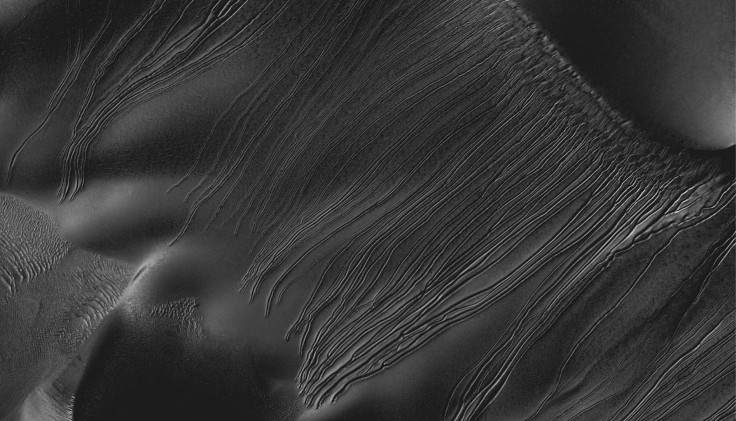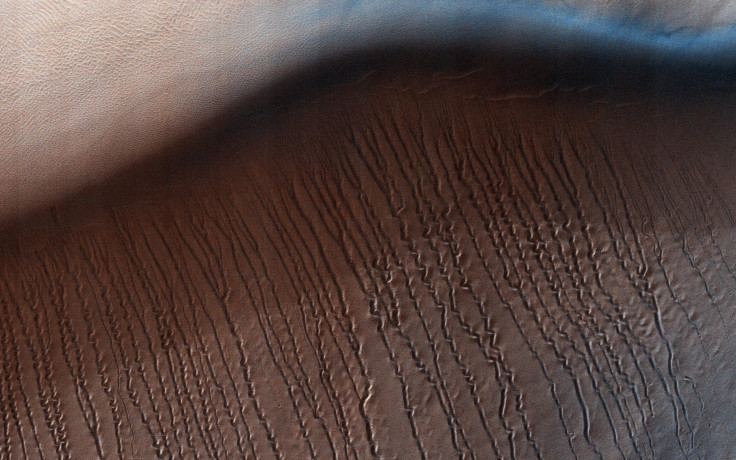NASA Mars Camera Sees Weird Scratches From Snowboarding Chunks Of Dry Ice

Dry ice is carving streaks into the Martian landscape that NASA describes as looking like “scratch marks.”
The space agency’s Jet Propulsion Laboratory shared a photo of the lines, made in Mars’ Hellas Planitia, that its Mars Reconnaissance Orbiter took as it was surveying the area — part of an almost 1,400-mile-wide impact basin on the planet’s southern hemisphere that is the largest one ever found in the solar system.
The grooves in this dune field, in the heart of the basin, squiggle as they run southeast, which give scientists a clue to how they form. According to NASA, the “linear gullies” are the result of the changing seasons on the Red Planet.
“Just like on Earth, high-latitude regions on Mars are covered with frost in the winter,” the space agency said. “However, the winter frost on Mars is made of carbon dioxide ice (dry ice) instead of water ice. We believe linear gullies are the result of this dry ice breaking apart into blocks, which then slide or roll down warmer sandy slopes, sublimating and carving as they go.”
Sublimation refers to the direct change in phase of the ice, which are warming up fast enough to skip the liquid phase and go straight from solid to gas.

The evaporating dry ice blocks deepen the scratches as they follow their predecessors, moving along the same pathways because of the way the properties of the sand on the slope pushes them along.
Scientists are still working to fully understand this process, however: “Determining the specific process that causes the formation and evolution of sinuosity in linear gullies is a question scientists are still trying to answer,” NASA said.
The features at Hellas Planitia are not the only of their kind ever found on Mars. The orbiter, which has been circling that planet for several years, has previously taken shots of marks dry ice made while streaking downhill. A few years ago, the MRO sent back an image from Russell Crater on Mars that shows the same effect.
At the time, NASA explained that the gas produced from the sublimating dry ice was probably concentrated below the frozen hunk, creating “cushions” that help it flow smoothly down the slope and dig its channels into the land.
To make their assertions, scientists tested out the process using dry ice in deserts on Earth.
“I have always dreamed of going to Mars,” planetary scientist Serina Diniega said at the time. “Now I dream of snowboarding down a Martian sand dune on a block of dry ice.”
© Copyright IBTimes 2024. All rights reserved.



















